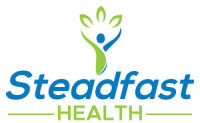Best and worst foods for kidney disease
Kidneys are one of the important body organs that play a crucial role in eliminating toxins from the body, maintaining water, fluid, and electrolyte balance, regulating blood pressure, helping in the production of red blood cells, and maintaining healthy bones. Habits that can harm the kidneys include excessive intake of painkillers, excessive salt intake, inadequate fluid consumption, eating processed foods, poor sleep regime, high intake of added sugar, excessive alcohol intake, and a sedentary lifestyle.
When the kidney loses its ability to perform its designated role, it causes build-up of waste products and fluids in the body. Symptoms of kidney disease include swelling in the feet and ankles, nausea, vomiting, high blood pressure, fatigue, loss of appetite, weakness, itching, and shortness of breath.
Types of Kidney Diseases
Acute kidney failure and chronic kidney disease are the two types of kidney diseases. Acute kidney disease occurs when the kidneys suffer any trauma or a decreased blood flow. It can also be caused by blockage (presence of a kidney stone) or due to high blood pressure. It is vital to note that acute kidney failure happens suddenly within a few hours or days. Whereas chronic kidney disease is a condition in which the kidneys gradually lose their abilities, making them prone to failure.
Kidney-Friendly Diet
Dietary recommendations for patients differ depending on their level of kidney damage. People with kidney disease have a special diet to follow. They have to ardently monitor their sodium, potassium, phosphorus, and protein intake because they can damage the kidneys.
Let’s check some of the foods that people with kidney disease can include and exclude from their diet:
Eliminate Sodium
Commonly found in table salt, sodium helps maintain the water balance in the body. A healthy kidney can maintain the balance of sodium levels in the body in people with CKD (chronic kidney disease). Hence, it becomes imperative to take care of what food to eat to maintain the sodium balance.
Foods low in sodium
It is best to include whole fruits like apples, berries, peaches, lemon, and watermelon. If you opt for canned vegetables, look for low or no-salt ones. The list can include carrots, corn, mushrooms, and asparagus. Additionally, if you go for frozen or fresh ones, choose carrots, broccoli, cucumbers, or eggplant.
Foods that contain high amount of sodium should be avoided. These include:
- Baked food items such as cakes, pizza and bread
- Instant noodles, macaroni, and readymade sauces
- Seafood such as shrimp, oily fish, oyster
- Packaged foods
- Red meat
- Egg yolks
- Pickled foods
- Alcohol
- Sugary drinks
Reduce intake of phosphorus
A healthy kidney can remove phosphorus from the body. It becomes tough with chronic kidney disease to get rid of phosphorus which gets accumulated and can increase the risk of heart disease.
High phosphorus foods to avoid or limit:
- Dairy products
- Beans
- Lentils
- Oatmeal
- Instant puddings
- Cold drinks
- Sweet potato
- Cashew, nuts, almonds, walnuts
- Animal protein such as meat, chicken
Sometimes, doctors prescribe phosphorus binders that help to manage phosphorus levels.
Cut Potassium from the diet
Extra potassium gets built up with chronic kidney disease, which can later lead to heart disease.
Foods to avoid as they have a high potassium content:
- Fruits such as ripe banana, custard apple, papaya, plum, ripe mango
- Vegetables like potato, pumpkin, tomatoes
- Cashew nuts, dry figs, walnut
- Drinks like coconut water, buffalo milk, condensed milk, wine, fresh fruit juices
Cut protein
With chronic kidney conditions, it is vital to follow a low-protein diet.
Here are a few foods low in protein:
- All fruits except dried fruits
- All vegetables barring peas, beans, and corn
Note: It is imperative to note that people on dialysis or suffering from kidney failure should not follow a low protein diet.
Maintain fluid balance
In the early stage of CKD, monitoring fluid intake is not necessary. However, when the condition is no longer under control, it is recommended to cut down on fluids. It is advisable to avoid salty foods, eat sugar-free to manage thirst, and keep track of fluid intake.
The views and opinions expressed, and assumptions & analysis presented in this content piece are those of the author(s) and do not necessarily reflect the official policy or position of any other agency, organization, employer or company. The information, including but not limited to, text, graphics, images and other material contained on this website are for informational purposes only. The purpose of this website is to promote broad consumer understanding and knowledge of various health topics. It is not intended to be a substitute for professional medical advice, diagnosis or treatment. Always seek the advice of your physician or other qualified health care provider with any questions you may have regarding a medical condition or treatment and before undertaking a new health care regimen, and never disregard professional medical advice or delay in seeking it because of something you have read on this website.




